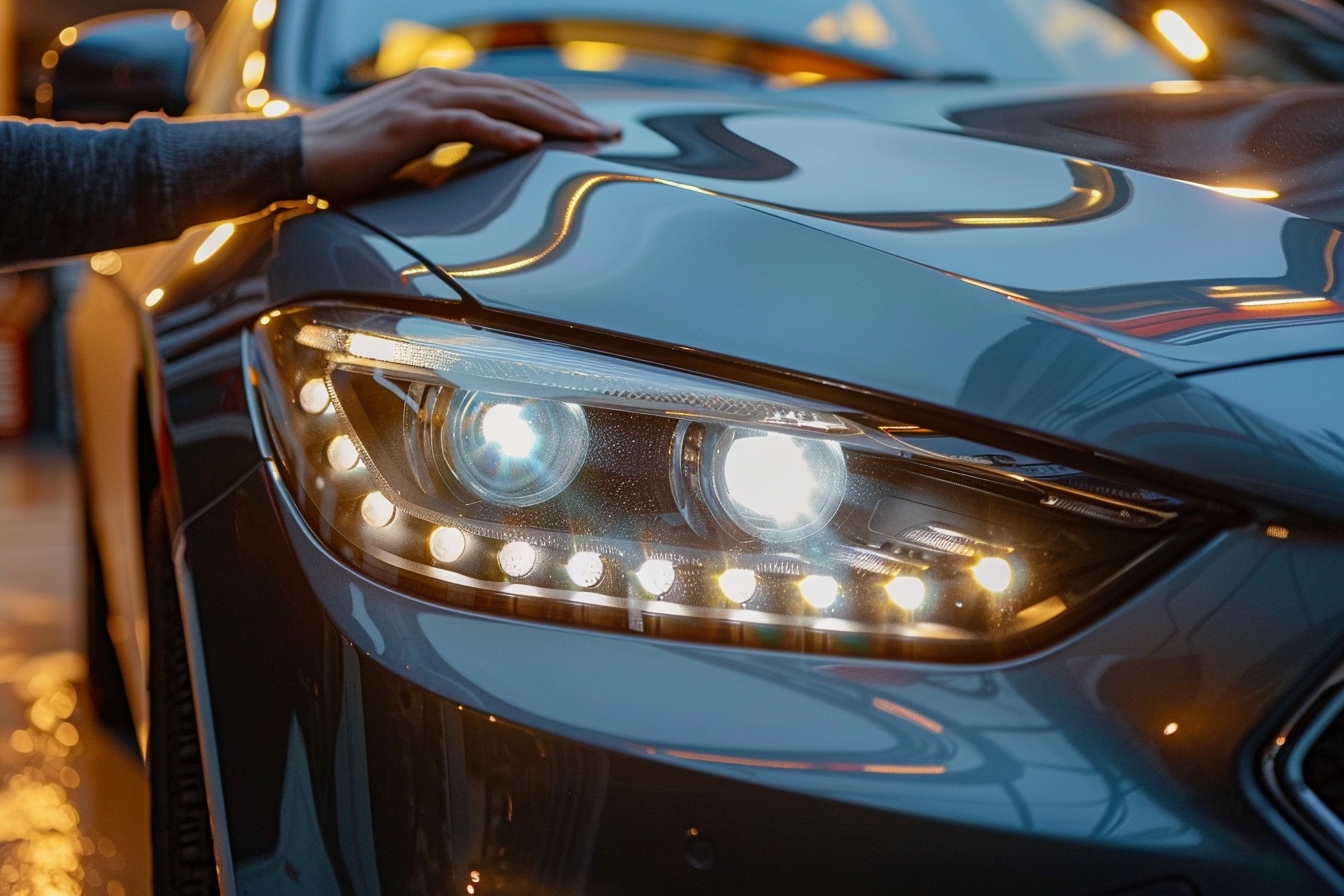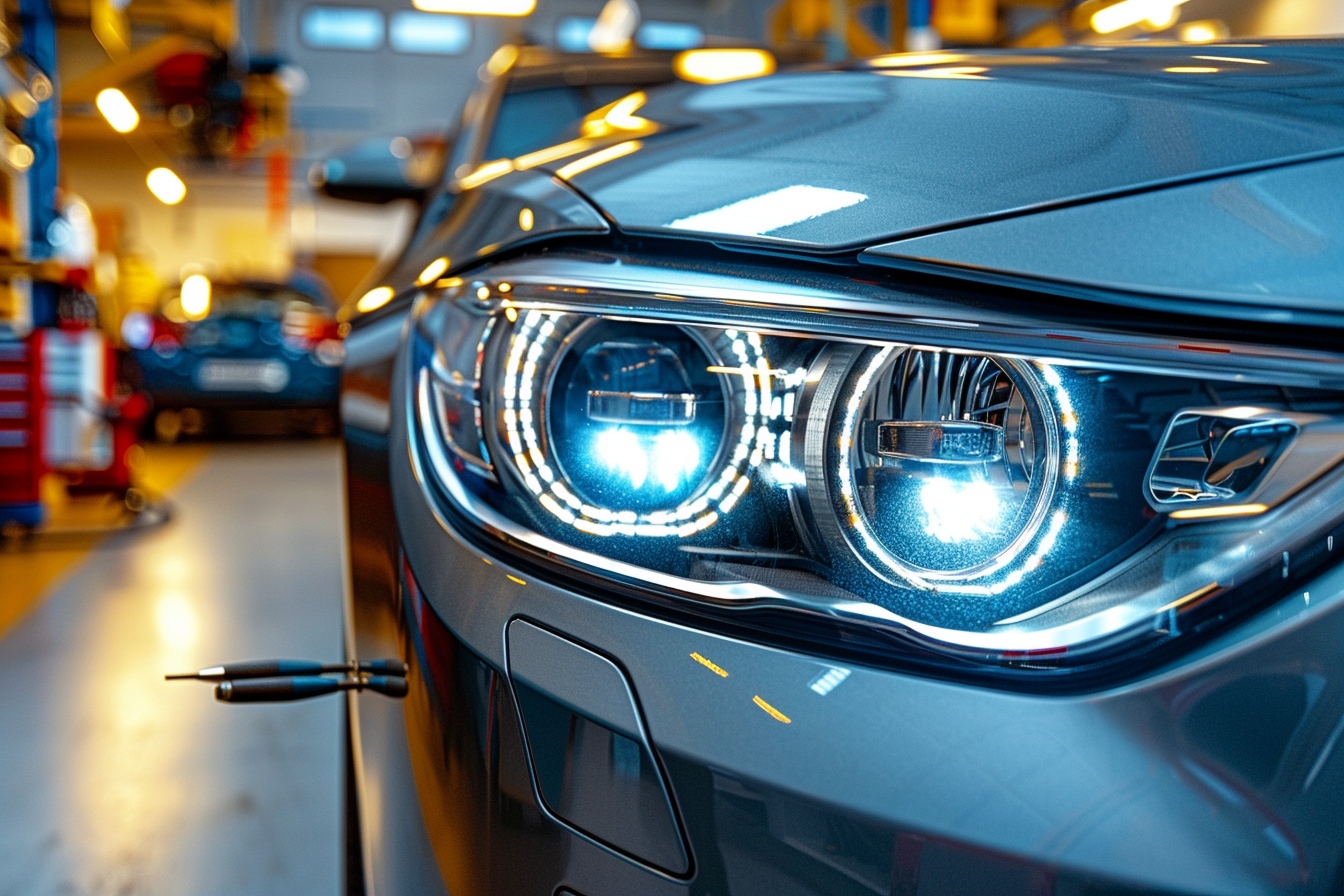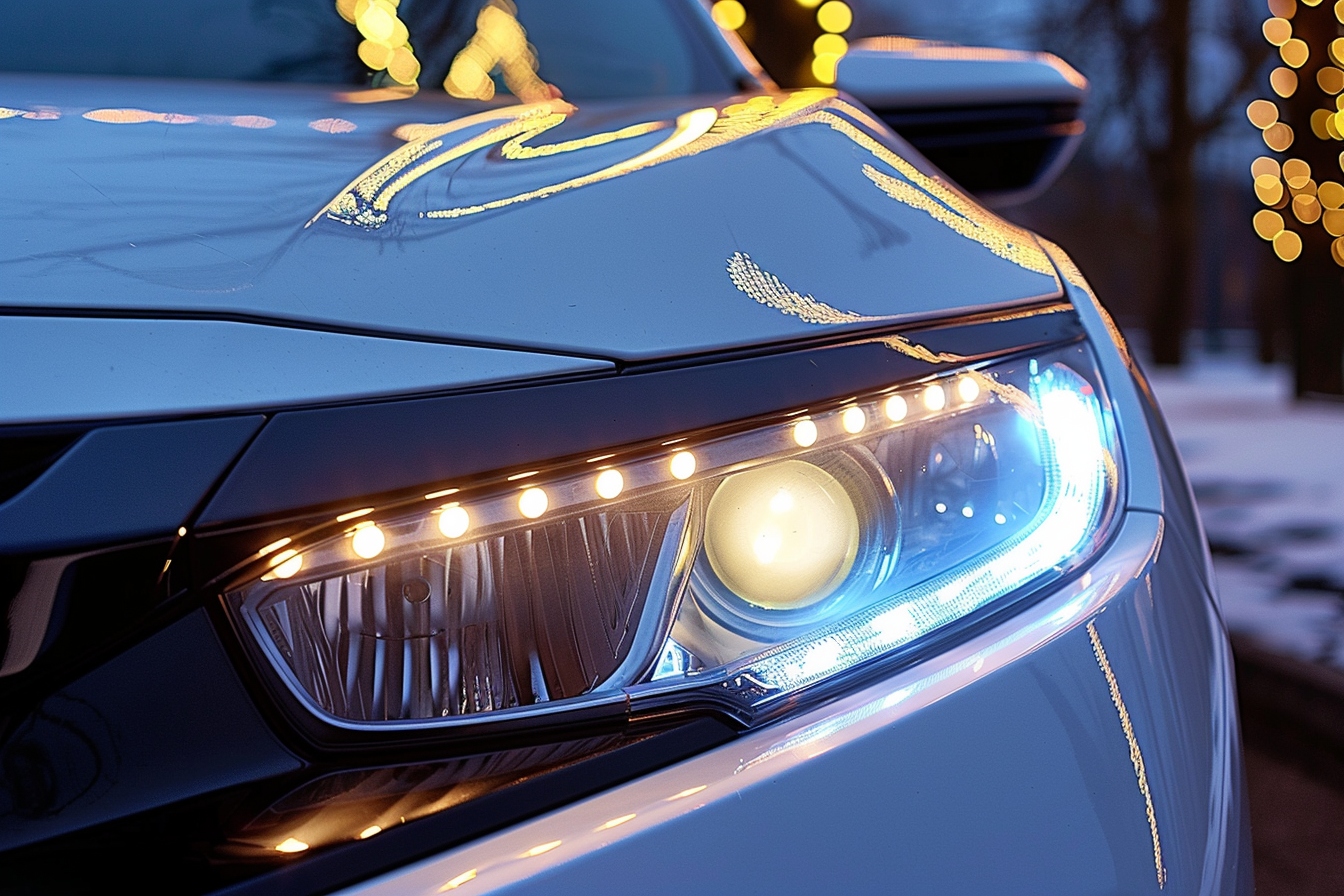Proper adjustment of your car’s headlights is essential to ensure optimal visibility and maximum safety when driving at night or during adverse weather conditions such as fog. Properly adjusted headlights not only adequately illuminate the road ahead, but also ensure that you do not disturb other drivers with a blinding light.
Prerequisites before starting

Before proceeding with the adjustment, some precautions are necessary to obtain the best results:
- Make sure the tire pressure complies with the manufacturer’s recommendations.
- Check that the headlights are clean and free of any dirt or debris.
- Check the charge level of your car battery; variations can distort the setting.
Necessary tools and conditions
You will need a Phillips screwdriver or hex wrench (depending on car model), a flat surface, and a wall or screen onto which to project the light from the headlights.
Ideal condition : Carry out the adjustment in the evening or in a sufficiently dark place to better see the light beam.
The tuning process
Vehicle positioning
Position your car facing a white wall or screen, on a perfectly horizontal and flat surface. The ideal distance between the headlights and the wall is generally 3 to 5 meters. Engage the parking brake to stabilize the vehicle.
Reference marking
Turn the headlights on low beam, and use adhesive tape to mark the centers of the light beams on the wall. Place two pieces of tape vertically to mark the outer limits of the headlights and two more horizontally to indicate the height.
Height adjustment
With the hood open, locate the adjustment screws or knobs associated with the headlight you are adjusting. Turn them gently to adjust the height of the light beam. Lighting should be dimmed, tending to illuminate the road without blinding other drivers. The upper part of the beam should be located just below the horizontal marking you have placed on the wall.
Lateral adjustment
The lateral adjustment is just as important, because it avoids too much lighting on the sides or on the opposite path. Adjust the side adjustment screws so that the beam projects straight ahead of the vehicle. The center points of the beams must coincide with the vertical marks.
Final check
Once you have adjusted both headlights, back your car several feet to observe the range of the light beam. Correct if necessary following the same steps. A check in real driving conditions could also prove useful.
Tips and tricks for optimal adjustment

- Use a spirit level to ensure your vehicle is positioned flat.
- If your car is equipped with LED or xenon headlights, be particularly careful because these systems are more complex and may require specific equipment.
- In rainy or foggy weather, the light beam should be adjusted lower to avoid light reflection, which could impair your visibility.
Mistakes to avoid
- Do not start by checking the general condition of your headlights and other associated equipment. Poor maintenance can distort your settings.
- Avoid adjusting the headlights when your vehicle is loaded. The adjustment must be carried out under normal conditions of use.
- Resist the temptation to raise the beam for better distance visibility, this can be dangerous for other road users.
Legal considerations to take into account

It is essential to remember that adjusting the headlights is not only a question of comfort but also of compliance with road regulations. Improper configuration could expose you to sanctions.
Professional help: when to seek it?
Not everyone is necessarily equipped or comfortable with this operation. If this is your case, seeking a professional could be a wise decision. The mechanics have specialized devices for precise adjustment that complies with safety standards.
By carefully exploring each step, taking care to follow the usual precautions and avoiding common pitfalls, adjusting a car’s headlights becomes a task within everyone’s reach. This technical know-how proves to be an undeniable asset for safe driving. This process, when carried out diligently, guarantees better nighttime visibility and significantly contributes to preventing road accidents.
Make your nighttime journeys as safe as those during the day and contribute to overall road safety by ensuring that your vehicle’s headlights are always correctly adjusted.












